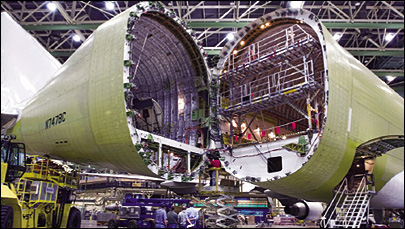Feb 01, 20071. EC ruling harmonizes use of UHF for RFID (December).
The European Commission issues a decision requiring EU member nations to designate UHF spectrum for RFID and make it available within the next six months. The decision makes previous recommendations mandatory, alleviating some concerns about the ability of European companies to implement large-scale UHF RFID systems.
2. Marks & Spencer expands item-level tagging—again (November).
Retailer Marks & Spencer announces plans to expand the RFID tagging of “complex-sizing” items—such as men’s suits that come in a large range of sizes—to 120 of its stores by spring 2007. The clothing and specialty-food retailer has been tagging items sold in six of its clothing departments at 42 of its 450 stores in the United Kingdom.
3. China endorses ISO 18000-7 433-MHz standard (November).
The China State Radio Regulation Committee gives its approval for vendors to sell 433-MHz RFID equipment that is compatible with the ISO 18000-7 standard. This solidifies the protocol as an international 433-MHz RFID standard. Now RFID technology vendors can market their wares in China more easily.
4. Metro Group announces RFID rollout to about 150 sites (October).
After testing five generations of the technology for more than two years, German retailer Metro Group is ready to roll out so-called dock-door RFID technology. The rollout is slated to occur at roughly 150 locations by the middle of next year.
5. Interop tests bring EPCIS closer to standard (October).
EPCglobal completes testing of prototypical software based on the EPC Information Services (EPCIS) specification. This set of protocols was designed to let end users of RFID technology exchange data with their supply-chain partners regarding the movement of EPC-tagged goods. The tests were an important step toward the ratification of the EPCIS specification as an EPC data standard.
6. ETSI tests show EPC scalable in Europe (October).
An RFID subgroup of The European Telecommunications Standards Institute (ETSI) announces the results of tests it conducted to determine the effectiveness of RF signal-synchronization schemes designed to enable large numbers of interrogators to function simultaneously under current ETSI regulations. The tests reveal that interrogators using the dense-reader mode of the EPCglobal Gen 2 air-interface standard are able to meet the requirements of the typical end user.
7. Boeing’s in-flight active-tag test is successful (September).
A test conducted by Boeing and Federal Express shows that active RFID tags on a plane have no effect at all on the operation of the aircraft. The successful tests open the way for adding tags with sensors to parts so that the status of the parts can be monitored in real time during a flight.
8. Intermec and Symbol resolve outstanding IP disputes (July).
After settling one of five lawsuits last fall, RFID hardware manufacturers Intermec and Symbol Technologies report that they have settled the four remaining intellectual property disputes between them. The settlement resolves some concerns that IP issues might slow the adoption of UHF RFID systems.
9. ISO approves Gen 2 EPC protocol (July).
The International Standards Organization (ISO) approves the EPC Gen 2 Class 1 UHF standard, as an amendment to its 18000-6 standard RFID air interface for item management using devices operating in the 860-MHz to 960-MHz ISM band. It ends concerns about competing UHF standards and opens the door for China, which said it would embrace only ISO-standard RFID technology, to use EPC technology.
10. Philips demonstrates polymer HF tags (February).
Philips Research, the research arm of Philips Electronics, creates a high-frequency (13.56-MHz) RFID tag using a polymer-based chip instead of a silicon one. Paper-thin and roughly the size of a postage stamp, the tag includes a printed metallic-ink antenna. This breakthrough brings the world a step closer to low-cost tags that can be printed cheaply and efficiently.


